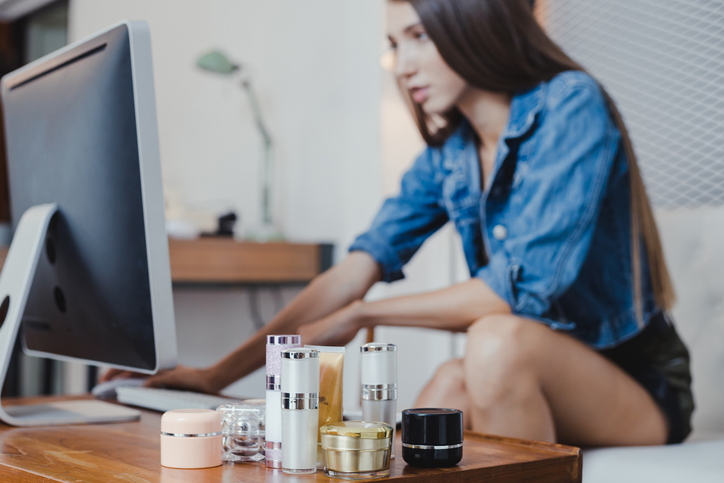The online share of global health and beauty sales is expected to reach 16.5% post-COVID-19 and reach 23.3% by 2025, according to Retail Insight, the research arm and data analytics from Edge by Ascential.
Alibaba and Amazon invest in health and beauty
Worldwide, Retail Insight said health and beauty will experience the second fastest growth in e-commerce after household and pet care in the coming years – largely due to emerging retailer participation. pure play. Chinese e-commerce mogul Alibaba, for example, has continued to add third-party health and beauty brands to its offering and US giant Amazon has recently invested heavily in healthcare.
By the end of 2020, Alibaba will have generated 36.5 billion euros ($43.2 billion) in online health and beauty sales and Amazon will have totaled 24.3 billion euros ($28.8 billion), accounting for 6.1% and 6.2% of total healthcare product sales, respectively. and the global beauty e-commerce category.
The UK would see the biggest increase in health and beauty e-commerce post-COVID, with sales growth expected to accelerate by 5% compared to an average increase of 1.8% across all global markets, according to RetailInsight. China would follow next with an expected 3.6% increase in online health and beauty sales.
“The rapidly changing digital outlook, coupled with the growing dominance of online players like Amazon and Alibaba, underscores the crucial importance of improving omnichannel offerings and online capabilities,” said Florence Wright, Principal Retail Analyst at Edge by Ascential.
Beauty Promise with Alibaba and Amazon Scale
Speaking to CosmeticsDesign-Europe, Wright said Alibaba and Amazon are attractive platforms for beauty brands looking to expand their online presence in the Europe, Middle East and Africa (EMEA) region.
from Alibaba “pure size and scale” – ready to serve two billion consumers worldwide by 2036 – did it “a must-have platform for brands looking to increase their reach and visibility internationally”, she says.
Alibaba’s call was that he was “more than just a sales platform, with an advanced and innovative approach to digital engagement”, she said, with options like live streaming and augmented reality on her core platforms, including Tmall, giving consumers “high levels of discovery and engagement”.
“…Online discovery remains a major challenge for the beauty industry, and something that Western online platforms have typically lacked. This makes Alibaba an attractive partner for brands looking to test and learn new engagement strategies to scale elsewhere,” says Wright.
For beauty brands operating in EMEA, she said Amazon should also already be an important part of online strategies.
“With [Amazon’s] sales in the EMEA region are expected to total $99.6 billion in 2020, more than three times the size of its next biggest online competitor. Its scale and reach offer clear potential for brands looking to grow their e-commerce business, especially in light of the accelerated shift to e-commerce. caused by the pandemic.
And while beauty remained a “Relatively underdeveloped part”of Amazon’s overall retail business, Wright said it was an area in which he had made progress. It recently launched its own private label range and expanded an augmented reality partnership with L’Oréal, for example.
“Beauty brands with e-commerce ambitions should watch and consider Amazon as a key route to market.”
Digital transformation to “extend reach and drive growth”
Worldwide, data from Retail Insight showed that Walgreens Boots Alliance will continue to dominate as the top health and beauty retailer in 2020, with total in-store and online sales reaching $110.2 billion. euros ($130.5 billion) by the end of the year – up from 104.7 billion euros ($124 billion) in 2019 due to its pivot to digital transformation and online execution following COVID-19.
Wright said: “With COVID-19 driving increased demand for health and beauty products, many retailers are anticipating further inroads into the category through enhanced online services and product lines.”
And while department stores saw a -10.9% decline in growth for 2020, she said “More beauty brands will be forced to diversify and focus on investing online to expand their reach and drive growth.”
Health and beauty brands have had to implement “Strong search optimization” and “powerful online visual merchandising”when working on these platforms to better engage with consumers in the future, Wright said.

